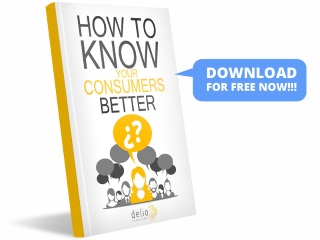
Content personalization and behavioral targeting are the key to engage the lead and boost conversions
Although both dynamic landing pages and personalized URLs attempt to show the content that is more likely to result in favorable response from the lead, the fundamental difference is that the landing pages try to persuade a visitor to take action by completing a transaction explicitly (filling out a form, making a call etc), while a personalized url tries to persuade the lead implicitly.
If at the first moment , it was understood as natural that the Landing Page shown to the lead would depend on the lead source (Google, Yahoo, Facebook, email marketing etc), one further step that occurs with personalization is to personalize any page visited by a lead (Dynamic Landing page or personalized URL), depending on other factors such as the stage where a lead is in the sales funnel or simply on his/her known interests.
Two of the benefits that happen with greater customization are obvious:
- Higher conversion rates: if the user sees content that is personalized and relevant, conversion rates are much higher than when the content and the landing page are static.
- Increased loyalty: personalized content that changes depending of time, lead and circumstance is far more likely to produce better results than static content.
The best known example of customizing the user experience may be on Amazon, where the lead (registered or not), will receive personalized suggestions based on the interests shown during previous visits to the site (as long as an unregistered lead does not delete the cookies).
 We can provide personalized content based on various lead factors such as:
We can provide personalized content based on various lead factors such as:
- Historical data: what did the lead do in the past?: page visited, mail and phone calls answered, sales funnel stage, etc.
- Situational data: what is the lead context?: time and date and special events like holidays, current season, weather, geo-localization, etc.
- Demographic data: who is the lead?: age, social interests, hobbies, occupation, etc.
Once we know the different elements involved in a personalized URL or a dynamic landing page, we have to see the systems that we need so that the integration can take place:
- Lead Management Platform, so we can segment the actions to be taken within the lead management workflow, (personalized content, calls, email, etc.), depending on a lead scoring value at a given time.
- A Web Personalization Platform, that allow us to integrate into the Landing page or personalized URL the required content according to a lead scoring value at a given time.
In this case the role of a Lead Management Platform is to feed the Web personalization platform with the historical, demographic, and situational data that allows the Web personalization platform to run a personalization workflow based on the data provided from the Lead management platform.
Thus at a given time, depending on the lead scoring , each user will see specific content that is relevant and facilitates the lead conversion to sales.
 Moreover, the Web personalization platform will provide the Lead Management Platform with feedback from all the lead interaction with the content, as tracked and collected by the Web Personalization Platform.
Moreover, the Web personalization platform will provide the Lead Management Platform with feedback from all the lead interaction with the content, as tracked and collected by the Web Personalization Platform.
Delio Lead Management is designed to be integrated easily with other platforms, allowing you to get the most of your Web Personalization Platform, integrating not only the online lead actions, but also the offline lead actions , and even the data from the CRM.







